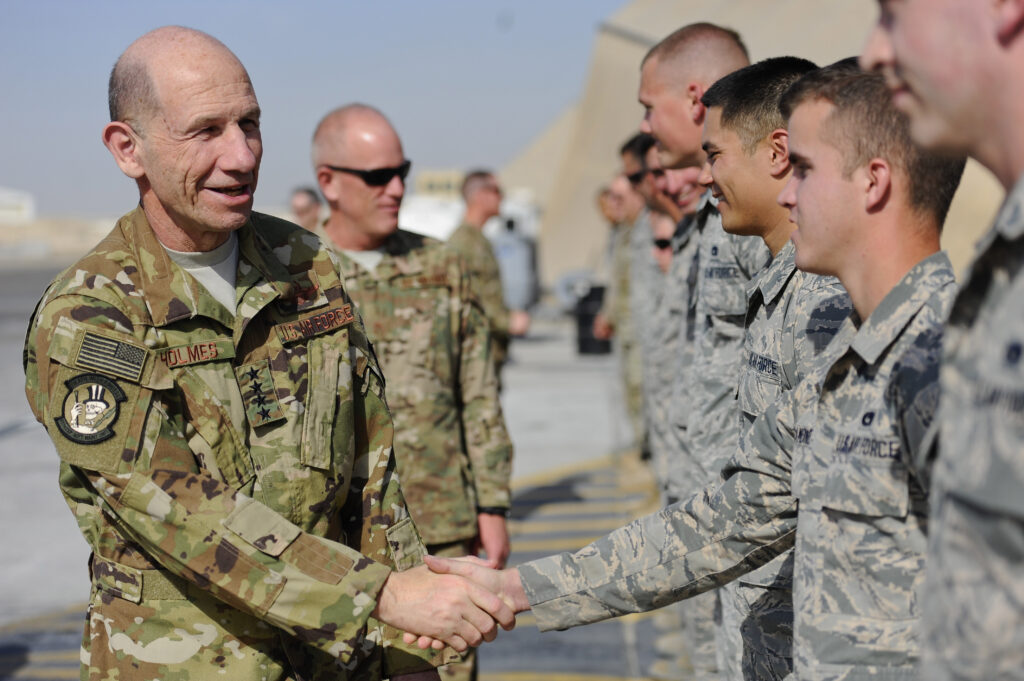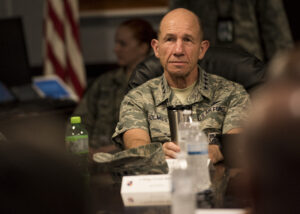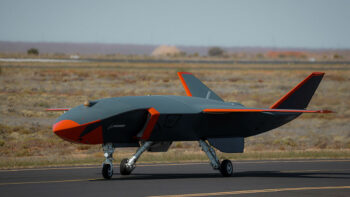
Gen. Mike Holmes isn’t ready to trust his young airmen’s lives to artificial intelligence.
WASHINGTON: The very pragmatic head of Air Force Air Combat Command says he is not yet willing to rely on information developed by the Artificial Intelligence program known as Project Maven.
Gen. Mike Holmes told the Defense Writers Group he doesn’t “think we’re there, at the point where we’ll turn it over to the machines.”
“The way Maven works is, it’s like your three-year-old plays with his iPad,” Holmes told reporters. The child looks at one image after another and says, “It’s car, car, car, not car,” the general said. “You work through it, have to teach it, and it learns and it’s learning — but it hasn’t learned to the point where you still don’t have to go back and have mom or dad look over the shoulder of the three-year-old and say, ‘yeah, that really is a car,’ or ‘yeah, that really is green.'”
The Air Force is already relying on AI to help with predictive maintenance and other tasks, Holmes noted, but those efforts have already been well tested by commercial airlines.

Gen. Mike Holmes visiting the Air Force’s elite ISR and targeting wing.
This abiding skepticism has long been one of the greatest obstacles for the effective use of artificial intelligence by the armed forces, which — despite their massive investments in R&D — have a strong streak of technological conservatism when it comes to trusting new technology with human lives. (Of course, when a new weapon does something really amazing, it can be hard to stop the military from adopting it wholesale without enough testing.)
Holmes was careful to note that the Maven algorithms are training themselves and getting better and better, which is exactly what machine learning is supposed to do: Feed the system more and more data and it gets better at what it’s supposed to do.
Maven was created by Google — which later abandoned the project — and other companies and was meant to be the leading edge of the Pentagon’s efforts to make AI useful. It got tools to the troops within six months in 2017. Intelligence officials are enthusiastic about Maven in its current form, because it is automating the mundane process of looking at the massive amounts of video from reconnaissance aircraft and other assets and trying to make sense of it in a predictable and rapid fashion. But, clearly, it hasn’t yet proven itself to senior combat-arms officers like Holmes.
(We can hear Lt. Gen. Jack Shanahan and his team at the Joint Artificial Intelligence Center groaning as they read this, since the Pentagon budget for 2021 is being built right now and the JAIC effort is not yet a program of record — thus more vulnerable to hungry budgeteers.)
In other news, Holmes made it clear that the Light Attack effort, started with such fanfare by former Air Force Secretary Heather Wilson and Chief of Staff Gen. David Goldfein continues to float along in a slow and uncertain fashion.
One interesting tidbit toward the end of the breakfast was Holmes’ declaration that Beyond Visual Range munitions are not enough for the US military as it goes against moving targets such as mobile rocket launchers. Why? For the simple reason that the pilots don’t know where the target is. That means there’s still a role for visual-range weapons pilots can fire once they get eyes on the target.
SOCOM tables amphibious MC-130J ambitions: Official
The command carried out steps like hydrostatic and wind tunnel tests, but are now “kind of hitting a pause” on implementing a water landing capability due to budget concerns.


























